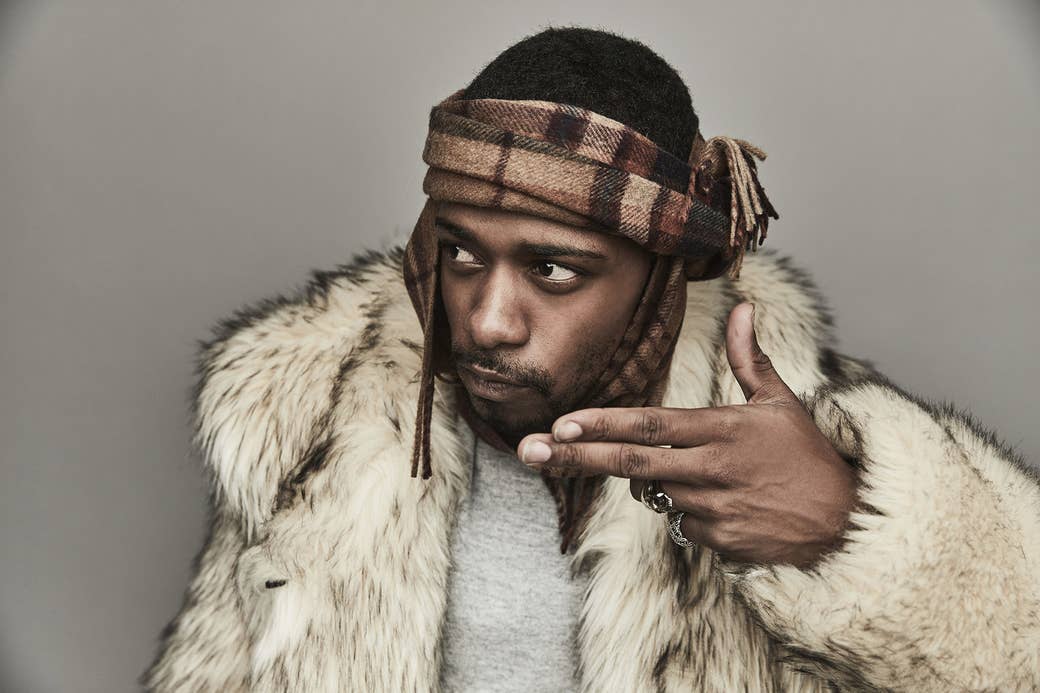
Back in “The Streisand Effect,” the fourth episode in the first season of FX’s Atlanta, Lakeith Stanfield’s character, Darius, along with Donald Glover’s Earn, embarks on a mission to pawn Earn’s phone for a much-needed cash infusion. By now, viewers know Earn’s gaping need, the stakes created by his strained relationship with his baby mama Van and caring for the couple’s infant daughter, Lottie. His dire circumstances contrast starkly with the more inane motivations of Darius, the trip’s unaffected guide, who periodically slingshots non sequiturs that reek of marijuana. By episode’s end, the pair’s exploits do not culminate in the way Earn had expected — with cash in hand — though Darius’s seeming irresponsibility has now been confirmed. An irate Earn waxes from fuming indignation to pained distress over the loss of his phone — his sole tradeable commodity — until Darius meekly offers his own phone for Earn to use as tender. This act alone is enough to elicit sympathy from the audience. Yet Darius heightens the moment by looking off into the distance and saying assuredly, “We’re friends now.” Stanfield’s earnest and slightly bemused wonder in delivering this revelation rescues the line from sentimentality, instead making this moment shared between two black men feel both genuinely tender and radically unusual.
Stanfield’s recent spate of work — beginning with Dope (2015) and continuing through 2016’s horror breakout Get Out, FX’s absurdist comedy series Atlanta, Netflix’s sci-fi thriller Death Note (2017), and July’s forthcoming sci-fi comedy Sorry to Bother You — has positioned the actor at the vanguard of black weird, where he endeavors to portray a kind of polyphonic black genius that lives at the intersection of sketch comedy, genre film and television, and underground hip-hop. “I'd like to take credit and say it's all my doing, but I'm just really fortunate to be surrounded by these creators who are doing daring things at this time,” he told Shadow and Act in February, gesturing to his remarkably consistent roster of culturally conscious projects. “I have the disposition that I want to be a part of things that say something and move the needle.” Stanfield’s body of work becomes a counternarrative to expectations of aggression or stoicism in black men entrenched in the public consciousness by racist representations of those men throughout history: rumors of their primitivism from the turn of the century, the ineffable cool attached to them by mid-century beat poets and “white Negroes,” and since the late ’90s, tropes of gangsterism projected onto them by commercial hip-hop. It’s as though Stanfield is determined to convince people that black men like him — sometimes panicked, sometimes defenseless — also exist.

Though black men are rarely granted symbolic expressions of vulnerability in American popular culture, Stanfield has produced many of the most recent onscreen iterations. It’s an ability the 26-year-old actor has honed over the course of his 10-year career, able to dart between characters who deliver both outlandish levity and pitiable despair. He began the explorations that ultimately led to acting while seeking sanctuary in his high school drama club in Victorville, California, from what he described in a 2014 interview with Fast Company as a dysfunctional family life. A transfer student, Stanfield sheltered his conspicuous personality in a troupe of high school theater misfits huddling among a more rambunctious student body. “I didn’t have many friends in my age group, because all they wanted to do was fight and have riots,” he said. Stanfield has channeled a lot of the hostility he absorbed during this period into this work; extolling his weirdness as a way of reclaiming it. "I'm pretty sure everyone involved with Atlanta to some extent has gotten bullied or told that they weren't going to be able to do something or that they weren't cool at some point in their life," he told the Los Angeles Times last April. Stranded in his nondescript town of about 100,000 people, Stanfield commuted the 100 miles to Los Angeles for auditions, until he secured management through the John Casablancas modeling and acting career center. Further auditions led to the role of Marcus in Destin Daniel Cretton’s short film Short Term 12, which went on to win the 2009 Sundance Jury Prize and was later extended into a feature film.
Stanfield has imprinted many of his projects with the kind of performances that flout tropes about the way black men behave.
Stanfield’s credits have grown steadily since 2008, and his work in genre productions especially has given him room to shift from petrified victim to glowering investigator to principled pothead to stalled postadolescent. Stanfield has imprinted many of his projects with the kind of performances that flout tropes about the way black men behave, performing a radical reimagining of black manhood onscreen so compelling that he often wrests the audience’s interest from his costars. Through the use of his slender body, feline face, and a vernacular inflected as much by the nasally brine of Southern California as by any black speech, he’s found a way to challenge the constraints of performing black masculinity in characteristically black spaces like in Atlanta. "It's an exciting time for me because I've always felt human but trapped in a body that made people believe things about me that simply weren't true. Now we get to express ourselves and live in that way with projects like Get Out, with projects like Atlanta. We get to just humanize the black male in Hollywood's racial structure,” Stanfield said in his LA Times interview.
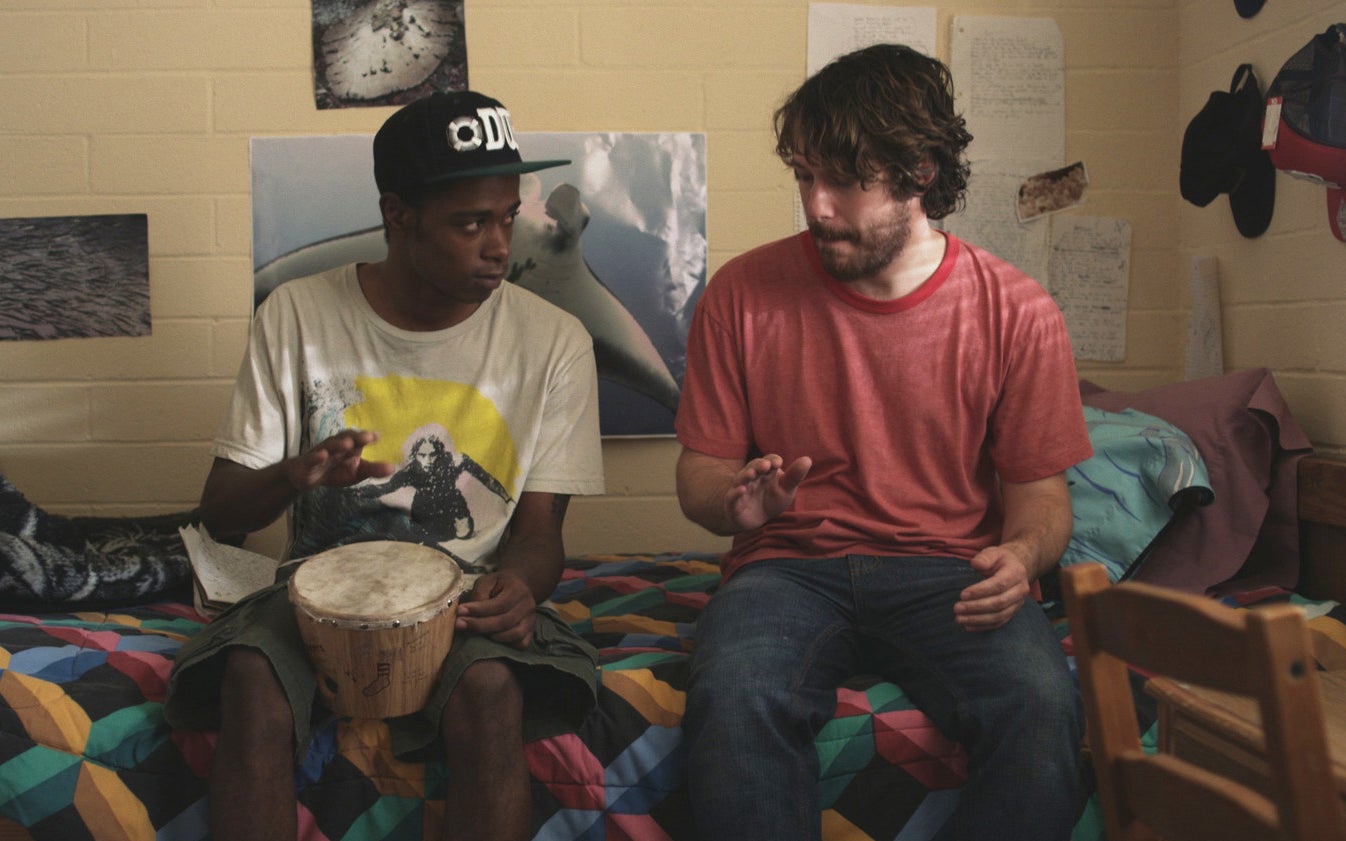
The status of Hollywood leading man — a role newly acquired by Chadwick Boseman in historical dramas like 42 and Marshall and Michael B. Jordan in Fruitvale Station and Creed, where both men capture the gravitas and romantic possibility of anonymous everymen in the mold of Denzel Washington — is ill-suited for Stanfield’s narrow frame and irrepressible physical energy. Yet the role of character actor isn’t a natural fit either. America’s most revered character actors have largely been white, as such a mantle has often required a level of indulgence for eccentricities that black actors, who carry the burden of respectability, have thus far not enjoyed.
Though Stanfield’s work has positioned him alongside scene-stealers capable of creating lasting, vivid portraits without much screentime — Philip Seymour Hoffman, Heath Ledger, Joaquin Phoenix — his performances are closer to those of black male stand-up comedians like Dave Chappelle and Richard Pryor. The strain of vulnerability that Stanfield conveys — eccentric, neurotic to the point of self-loathing, abject even — stems from the taut, visibly anxious personas of these predecessors from the stand-up stage. Forest Whitaker and Jeffrey Wright notwithstanding, Hollywood has never furnished its cinema with as rich a tradition of black male trepidation.
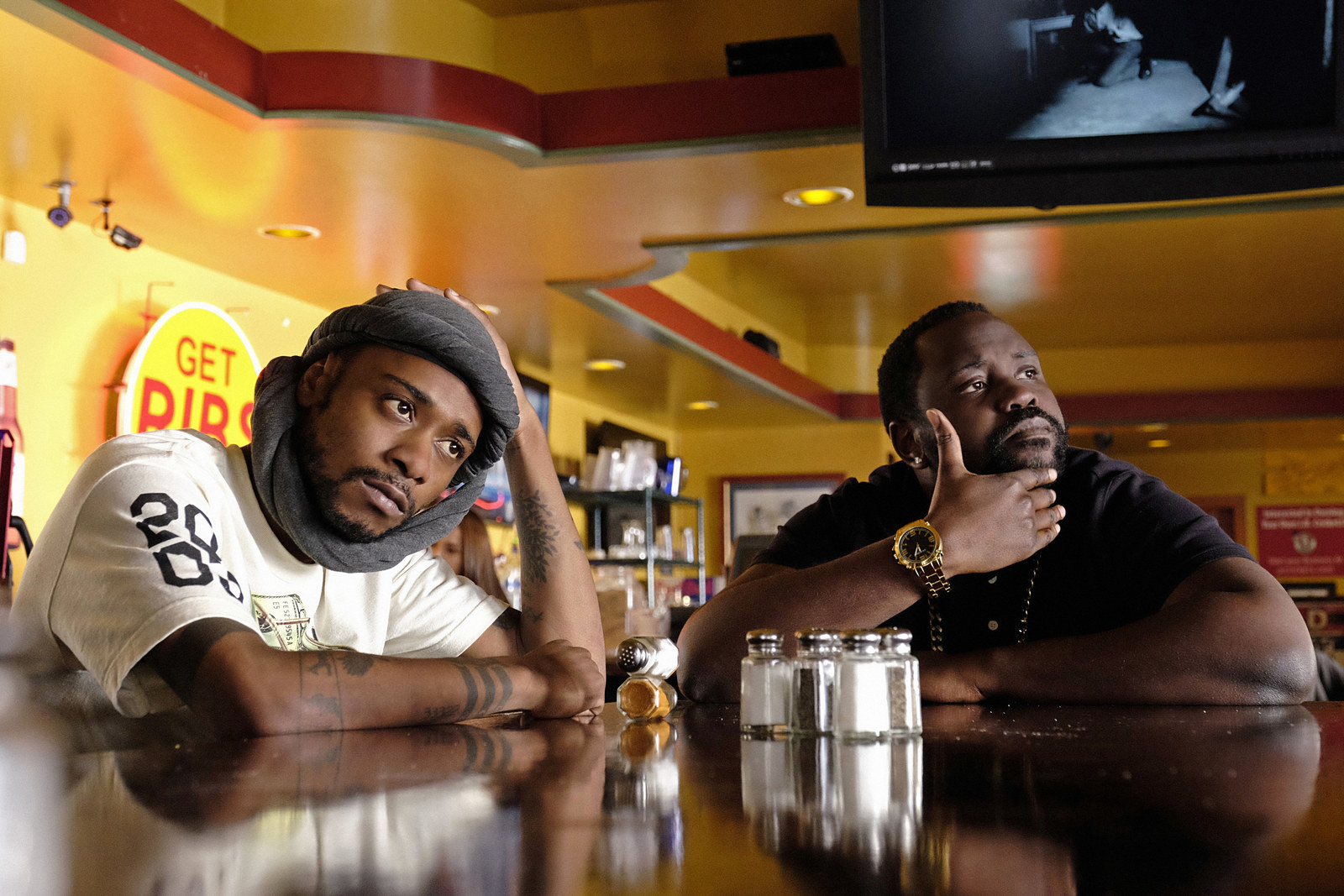
Both Chappelle and Pryor dismantled expectations of black male cool by presenting themselves as both manic and cerebral, bodies strung so tight with ideas they appeared clenched. Hilton Als declared of Pryor in a 1999 issue of the New Yorker: “Before Richard Pryor, there were only three aspects of black maleness to be found on TV or in the movies: the suave, pimp-style blandness of Billy Dee Williams; the big-dicked, quiet machismo of the football hero Jim Brown; and the cable-knit homilies of Bill Cosby. Pryor was the first image we’d ever had of black male fear. Pryor was filled with dread and panic — an existential fear, based on real things, like racism and lost love.” Pryor and Chappelle squirmed before the gaze of their audiences. Both men found an escape route from the demands of posturing imposed on black men in comedy’s pursuit of radical honesty. Post-Chappelle, audiences knew the potential of comedy’s boisterous, expansive impulses, that it could destabilize traditional masculinities — even those stubbornly affixed to black men.
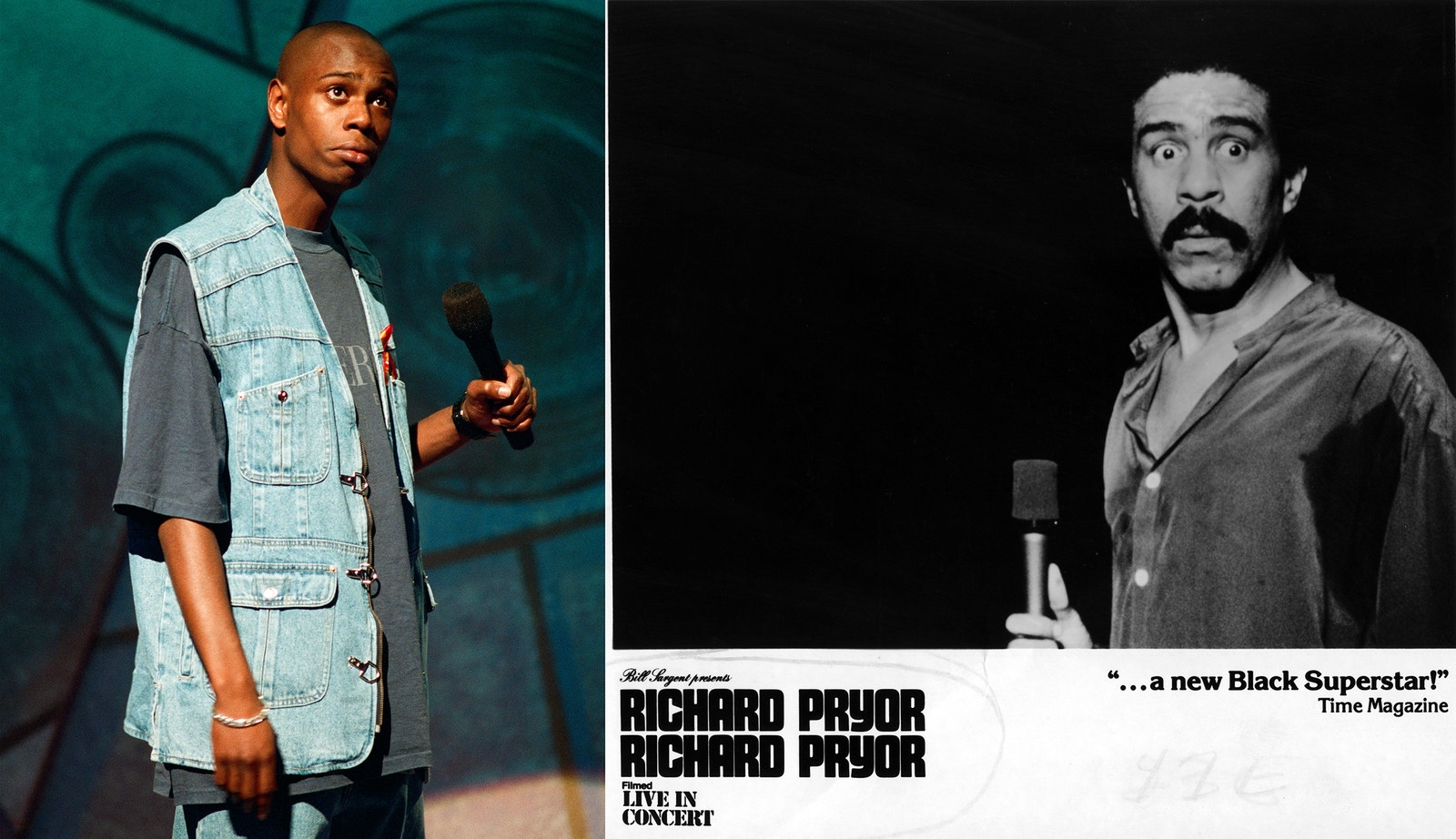
Stanfield quivers with that same fear. The shock of his physical presence arises from the incongruence between an audience’s expectations of a more traditional black male cool and the spastic, hunch-shouldered version of masculinity he presents. This transition happens most starkly in Stanfield’s brief and terrifying role in Get Out, where he shifts from a self-assured black man strolling a darkened suburban neighborhood in the film’s opening scene to a lobotomized partygoer whose eyes widen with panic later in the movie. In 2017’s live-action anime adaptation Death Note, Stanfield conveys the fragility of L, a genius private investigator with a traumatic history, through distinct physical mannerisms, an unfocused gaze, and a crouching posture, all while concealing his nose and mouth with a black mask and hoodie.
Stanfield also grants his characters an interiority that feels novel, a quiet insularity rarely afforded black men both in drama and in life.
Of L, Stanfield told Rolling Stone in August 2017, "Well, he's a little Aspergers-y. L is a pretty awkward guy, and I definitely feel like that. Like, a lot." Both roles allowed Stanfield to perform a kind of dread pioneered by Chappelle and Pryor, and present black male characters that do not appear comfortable in the world; rather, they seem menaced by it. Stanfield also grants his characters an interiority that feels novel, a quiet insularity rarely afforded black men both in drama and in life, whose survival more often depends on public engagement, the requirement that they explain their reason for being, and do so enthusiastically. White supremacy conditions most Americans to read a threat into black quiet. To alleviate this fear, black people, men especially, grow accustomed to approaching society with palms raised, bumbling effusive apology for arriving as themselves. Refusing Americans this apology by keeping their mouth shut therefore becomes a radical act.
The self-possession Stanfield dramatizes often means that his characters — Darius from Atlanta, adrift in a wash of murmurs and sporadic theoretical asides, or Cassius Green from Sorry to Bother You, a movie that externalizes the racial ventriloquism that goes on in the mind of a black telemarketer — possess a sneaky intelligence. In an interview from 2017, Death Note director Adam Wingard praised Stanfield’s adeptness at “ground[ing] even the most outlandish character personalities. Anybody can be frenetic but very few actors can achieve what Stanfield can: eccentric authenticity." It’s exhilarating to watch Stanfield indulge in the kind of whimsy that appears odd for a black man to possess. He demands that his unconventionality be accommodated by a world bent on policing black caprice. He finds the most ready outlet for these impulses in works that call for expressions of neurosis. In so doing, Stanfield makes black men with dynamic inner lives more readily discernible to audiences and therefore likelier to survive a world whose flat renderings of black manhood can diminish those men’s complexity.

While abjection is often the defining characteristic of any performer — a palpable discomfort on display — it is especially the province of comedians like Pryor and Chappelle. There is often a sense of defeat pervading their work, a willingness to hazard postures of failure. Pryor routinely stripped himself of propriety, declaring on 1974’s That Nigger’s Crazy, “The bitch was so fine, I wanted to suck her daddy's dick.” He also fixated on the victimized in order to tap into his own fears of being a victim, going so far as to catalog the torments of a cast of victims as diverse as animals on an African savanna to pleading men caught in the claws of cold-hearted women in his 1982 special Live on the Sunset Strip. You hear his true panic once he finally arrives at the victim he’s been circling all along: himself. “I must drive my accountant crazy ’cause I wake up at 3 in the morning, going, ‘Aye, man. What the fuck — how much is it?’” Pryor jokes, describing his paranoia about the money he has amassed. “‘Well prove it. Bring it over.’” For Pryor, exhibiting insecurity in this way cast him as pitiable even when on top, a position from which he could wring laughs from his audience.
Chapelle too chronicled the stress of social interaction, figuring himself as the sufferer of a kind of hyperawareness. “That’s my problem,” he said on his 2000 special Killin’ Them Softly, “I can’t handle pressure. Sometimes pressure make me talk different. I’m serious. You ever have that social pressure? You ever talk to somebody who’s fake, and they make you fake? Like they come up to you like, ‘Hey, how you doing?’ And you’re like, ‘Fine, how are you?’ And you’re like, I don’t even talk like that.” If blackness demands a public veneer of seamless self-assuredness, then entertainers like Stanfield, Chapelle, and Pryor before them, explode that notion, appearing as people coming apart, and allow their own stuffing to show. By owning their own anxiety about how to be, they are able to handily refute the black male bravado American audiences have grown accustomed to throughout history.
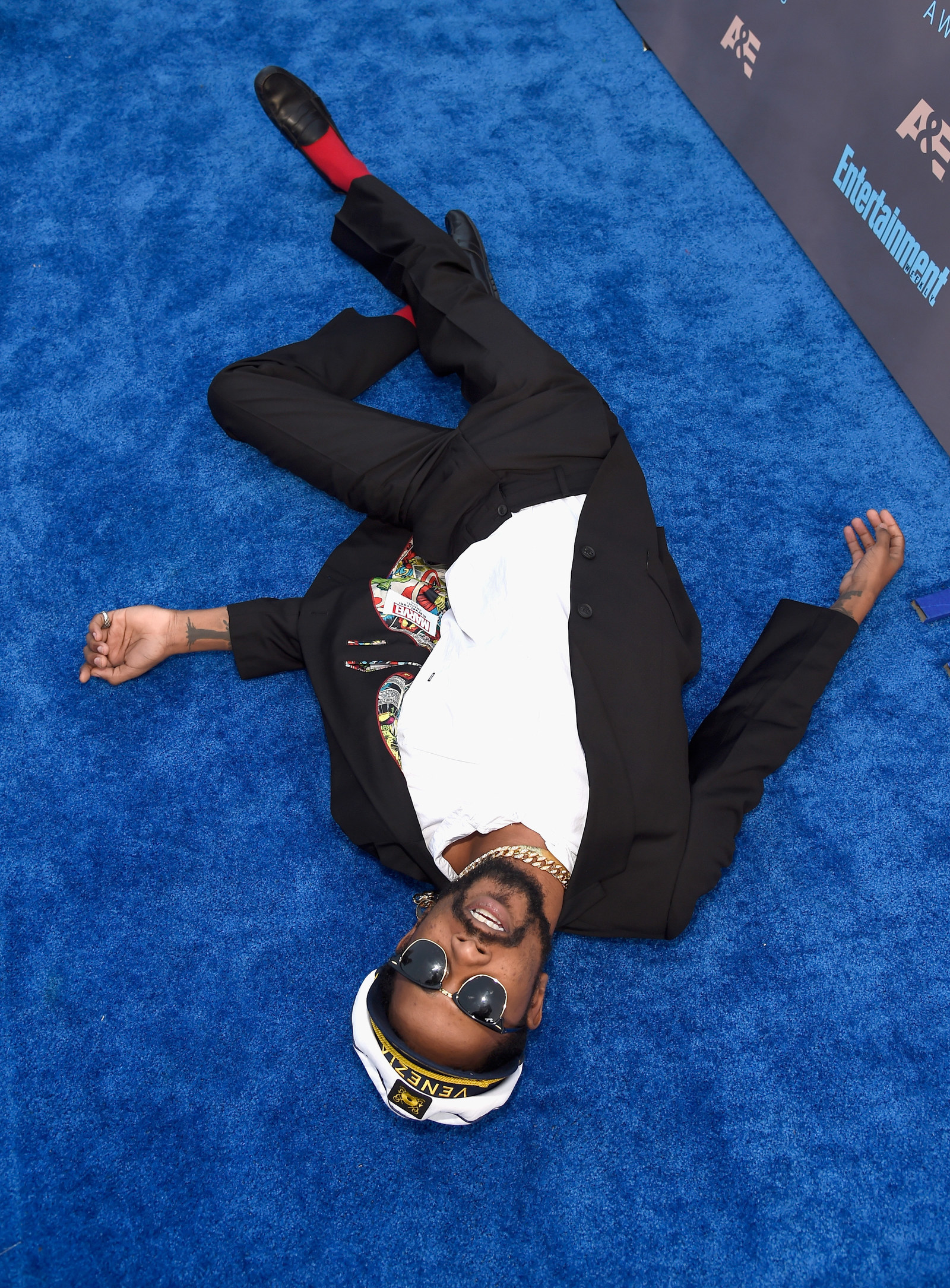
As a pop culture persona, Stanfield is a product of the restless circuit he travels between the poles of exposure and disguise. Out in the world, he portrays himself as radically honest; ultimately, however, he often retreats — into performance or from public view — when the exposure becomes too unbearable. This shuttling indicates the labor of maintaining such a permeable barrier between his onscreen roles and his actual self, but it may also signal a distinct hardship for Stanfield and his black contemporaries, positioning themselves as creators while also negotiating how much of themselves to give to their fans. Both Stanfield and his costar and Atlanta creator Donald Glover seem incredibly aware of the power they wield as authors of a refashioned and newly enfranchised black creative identity. In a recent New Yorker profile, Glover seemed to alternately lord his ability above his audience (“People accept me now because I have power, but they still think, Oh, he thinks he’s the golden flower of the black community, thinks he’s so different. But I am, though! I feel like Jesus. I do feel chosen.”), declare his good intentions for innovating new representations of blackness, and then threaten to abandon his admirers without giving them any notice (“It’ll be like I was at a big party, and everyone’s enjoying themselves, wandering around — and suddenly you all start going, ‘Where’s Donald?’ ‘Where’d he go?’ ‘I saw him, I talked to him!’ ‘He was just here a little while ago!’ And then the collective shrug: ‘Oh, well, I guess he slipped out.’”).
As a pop culture persona, Stanfield is a product of the restless circuit he travels between the poles of exposure and disguise.
Stanfield too has exhibited an unpredictability when handling a kind of self-disclosure he himself has initiated. Invited to reprise his role from Get Out at the 2018 Academy Awards, Stanfield appeared onstage in his costume from the movie’s infamous garden party scene and yelled “Get out!” at the slightly stricken audience. Rather than graciously absolve the crowd for the awkward moment, or even take the blame for the gag’s failure, Stanfield followed up by tweeting “That was weird” immediately after making it offstage. Stanfield often manages to sidestep shame in moments like these by deploying humor. At the 2016 Critic’s Choice Awards, Stanfield took the stage and pretended to accept the trophy for Best Comedy Series, though the award had actually been won by HBO’s Silicon Valley. The audience played along then too, by laughing as Stanfield impishly sauntered off stage, though the moment felt like a spoof of the 2009 MTV VMAs when Kanye West bum-rushed the stage to declare Beyoncé the more deserving recipient of that year’s honor for Best Female Video.
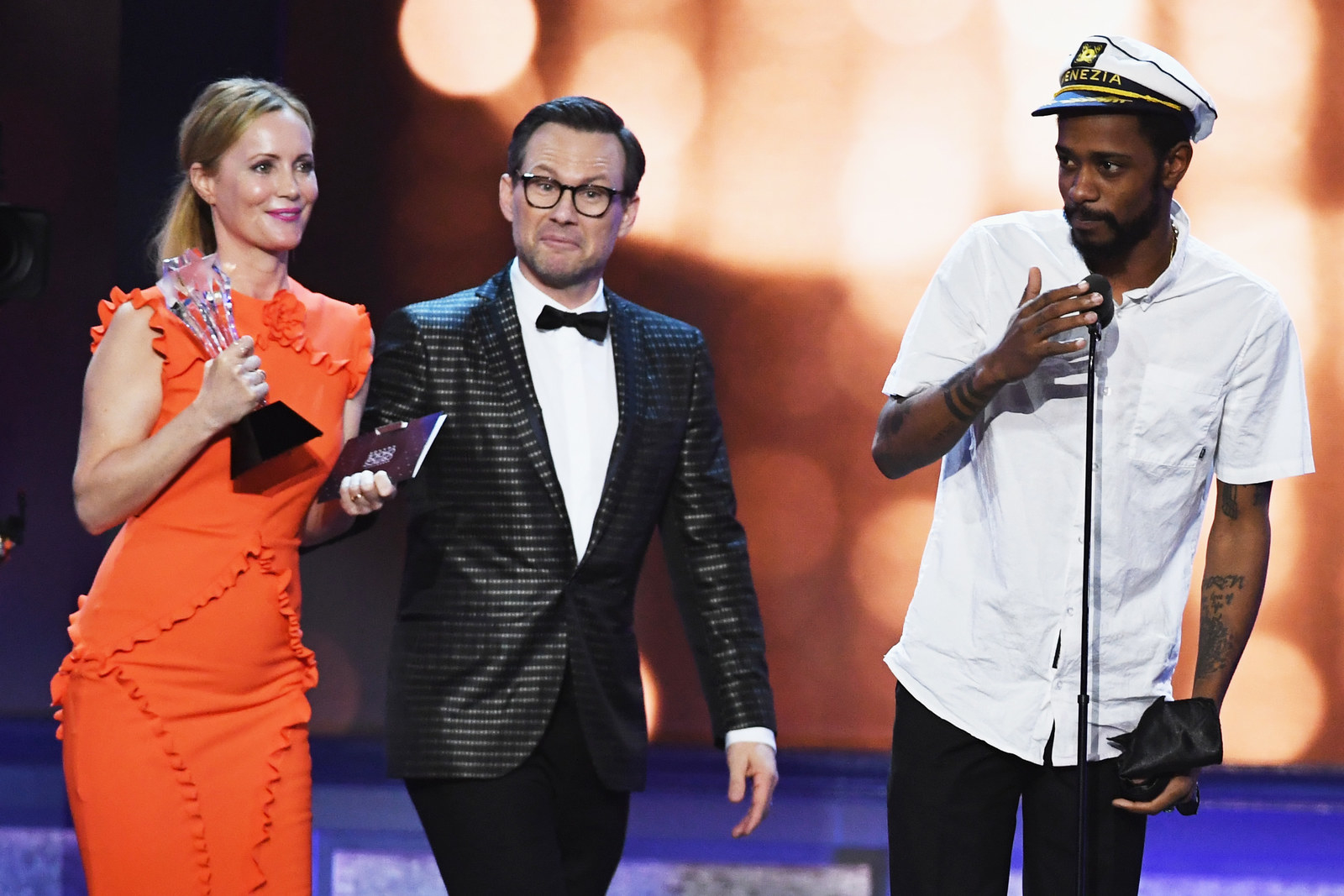
These moments, where we are invited to laugh and sometimes to wince at his foibles, can spill from his professional life into his real life. This month, he posted his actual phone number on Twitter, along with the message “I wanna say Hi to some of you guys.” Five minutes later, presumably bombarded by calls, he followed up by saying, “Woah. That was a really bad idea.” And then, simply, “STOP!!” Again, Stanfield demonstrated a desire to bare himself to a public he has seduced into fawning, only to snatch himself away from offering so much access once inundated by the frenzy he has stirred among his admirers.
But instead of evading moments like these, Stanfield almost seems to cultivate them, gaping along with the rest of the internet as though his life were all one big performance art piece. While appearing on New York’s 105.1 FM’s The Breakfast Club to promote Atlanta in 2016, Stanfield gamely accepted an invitation to freestyle from the show’s three hosts: DJ Envy, Angela Yee, and Charlamagne tha God. “It’s that runaway Django,” he rapped. “Been done away with that same ol’, age old / Horseshit, exclaim 'Go' / Vibrating at the speed of a gyrating skeeza / To get it poppin’ on the swipe of a Visa … Mastery of algorithm I compute in my sleep / Zoom past doofus-ass blacks in du-rags / Slappin’ Massa with that Cancer flash.” Following the performance, Stanfield weathered a withering dismissal from Charlamagne, who asked, “That’s it?” The exchange was excruciating to watch, yet Stanfield salvaged some dignity in his quiet stoicism, silently enduring Charlamagne’s slights, as though he were storing the moment’s tense energy to use for a future performance.
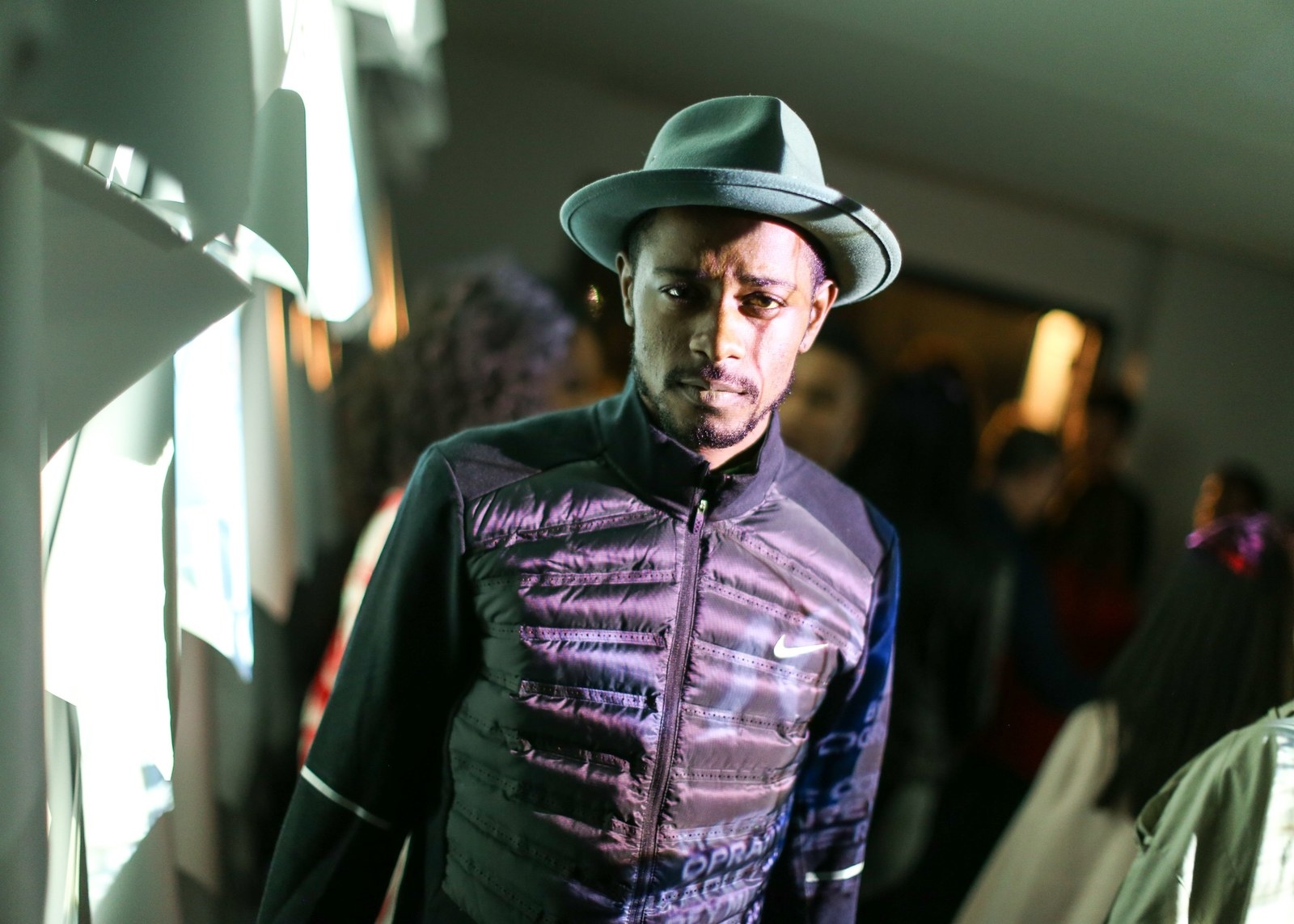
Stanfield himself appears confused by his own desire to divulge himself to his fans. If abjection is understood as being burdened by a part of oneself that can never be cast off and all its attendant frustrations, then Stanfield seems burdened by his desire for an audience’s attention. Even in this kind of indecisiveness, he mines his stand-up predecessors. “All a stand-up’s life feels abject to him or her,” writes comedy theorist John Limon in Stand-Up Comedy in Theory, or, Abjection in America, “and stand-ups try to escape it by living as an act.” Both Chappelle and Pryor also struggled under the weight of this impulse to be revealed; neither found any real comfort in the vulnerability they managed to summon onstage, with Pryor refusing to offer straight answers to reporters’ questions, or responding vaguely when describing his upbringing, and Chappelle decrying Hollywood’s habit of emasculating black men to Oprah in order to explain why he walked away from Chappelle’s Show at the height of its popularity. Both men sought to maintain control of their narratives, perhaps due to the exposure they felt occupying the positions they’d staked for themselves within the culture. And both men balked once they lost that control.
Novel black identities such as Stanfield’s have always spurred an appetite in American culture — an appetite that first coddles these performers before burying them beneath expectation. While Stanfield has been able to watch what happened to his predecessors — and seemingly navigate fame with the same wariness — he has yet to shut off personal access to fans and thus establish a stronger division between his performances and his own real life. Rather, the orneriness on view in his social media posts, and the occasional (no less endearing) poutiness of his characters, seems to reveal something deeper, the contentious relationship every performer has to performance itself, and the terror of trying to occupy — and sustain — black male vulnerability. ●
Frederick McKindra, a 2017 BuzzFeed emerging writer fellow, has received support from the Bread Loaf Writer's Conference as a 2017 work study scholarship recipient for fiction and the Lambda Literary Foundation as a 2017 writer in residence. Currently, he contributes a monthly column to the Oxford American Magazine's online series The By and By and is at work on a novel.
